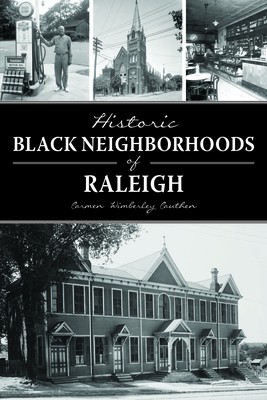
- We will send in 10–14 business days.
- Author: Carmen Wimberley Cauthen
- Publisher: History Press
- ISBN-10: 1467150886
- ISBN-13: 9781467150880
- Format: 15.8 x 22.1 x 2.5 cm, softcover
- Language: English
- SAVE -10% with code: EXTRA
Reviews
Description
The story of Raleigh's African American communities begins before the Civil War.
Towns like Oberlin Village were built by free people of color in the antebellum era. During Reconstruction, the creation of thirteen freedmen's villages defined the racial boundaries of Raleigh. These neighborhoods demonstrate the determination and resilience of formerly enslaved North Carolinians. After World War II, new suburbs sprang up, telling tales of the growth and struggles of the Black community under Jim Crow. Many of these communities endure today. Dozens of never before published pictures and maps illustrate this hidden history.
Local historian Carmen Wimberly Cauthen tells the story of a people who--despite slavery--wanted to learn, grow, and be treated as any others.
EXTRA 10 % discount with code: EXTRA
The promotion ends in 17d.22:29:31
The discount code is valid when purchasing from 10 €. Discounts do not stack.
- Author: Carmen Wimberley Cauthen
- Publisher: History Press
- ISBN-10: 1467150886
- ISBN-13: 9781467150880
- Format: 15.8 x 22.1 x 2.5 cm, softcover
- Language: English English
The story of Raleigh's African American communities begins before the Civil War.
Towns like Oberlin Village were built by free people of color in the antebellum era. During Reconstruction, the creation of thirteen freedmen's villages defined the racial boundaries of Raleigh. These neighborhoods demonstrate the determination and resilience of formerly enslaved North Carolinians. After World War II, new suburbs sprang up, telling tales of the growth and struggles of the Black community under Jim Crow. Many of these communities endure today. Dozens of never before published pictures and maps illustrate this hidden history.
Local historian Carmen Wimberly Cauthen tells the story of a people who--despite slavery--wanted to learn, grow, and be treated as any others.


Reviews